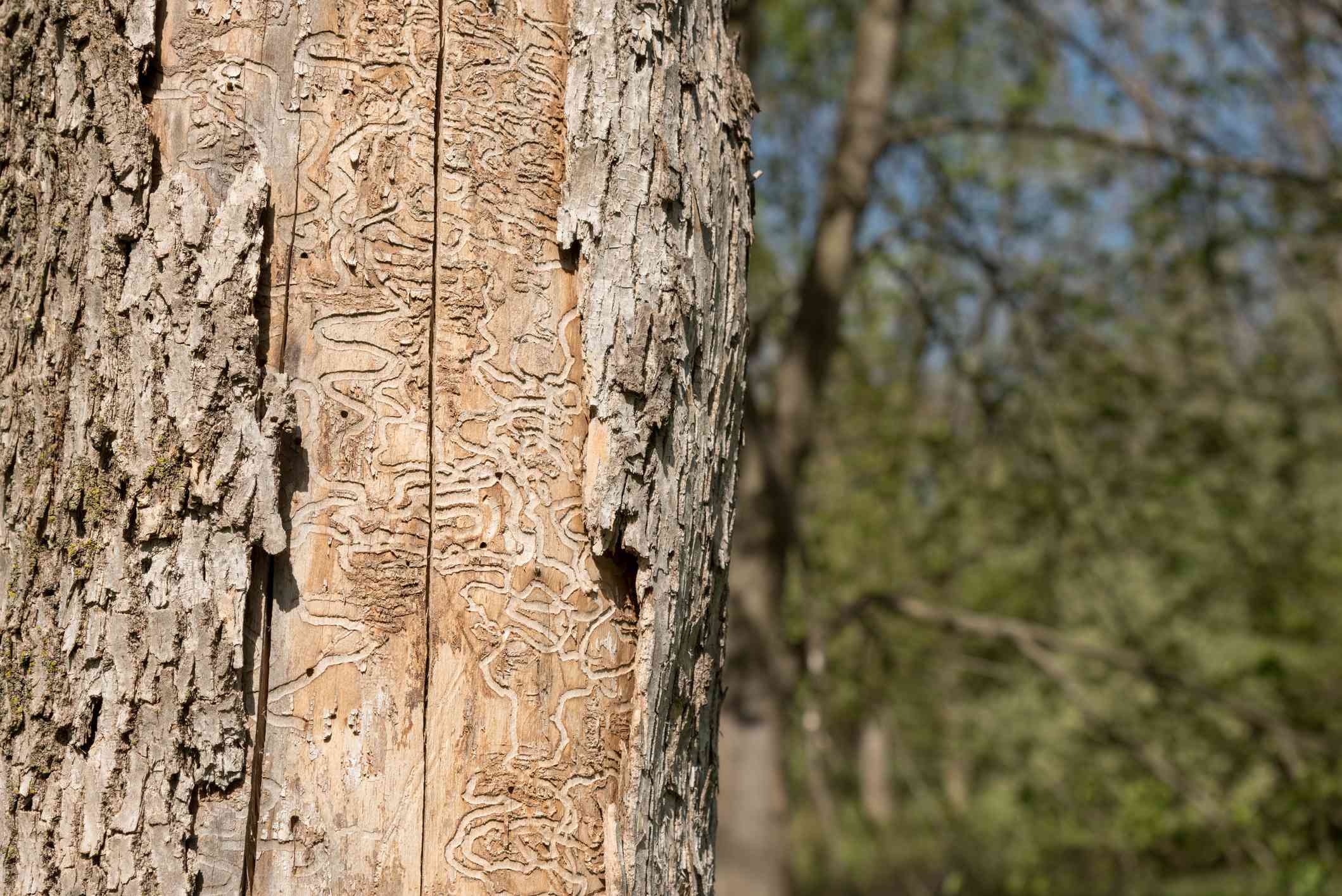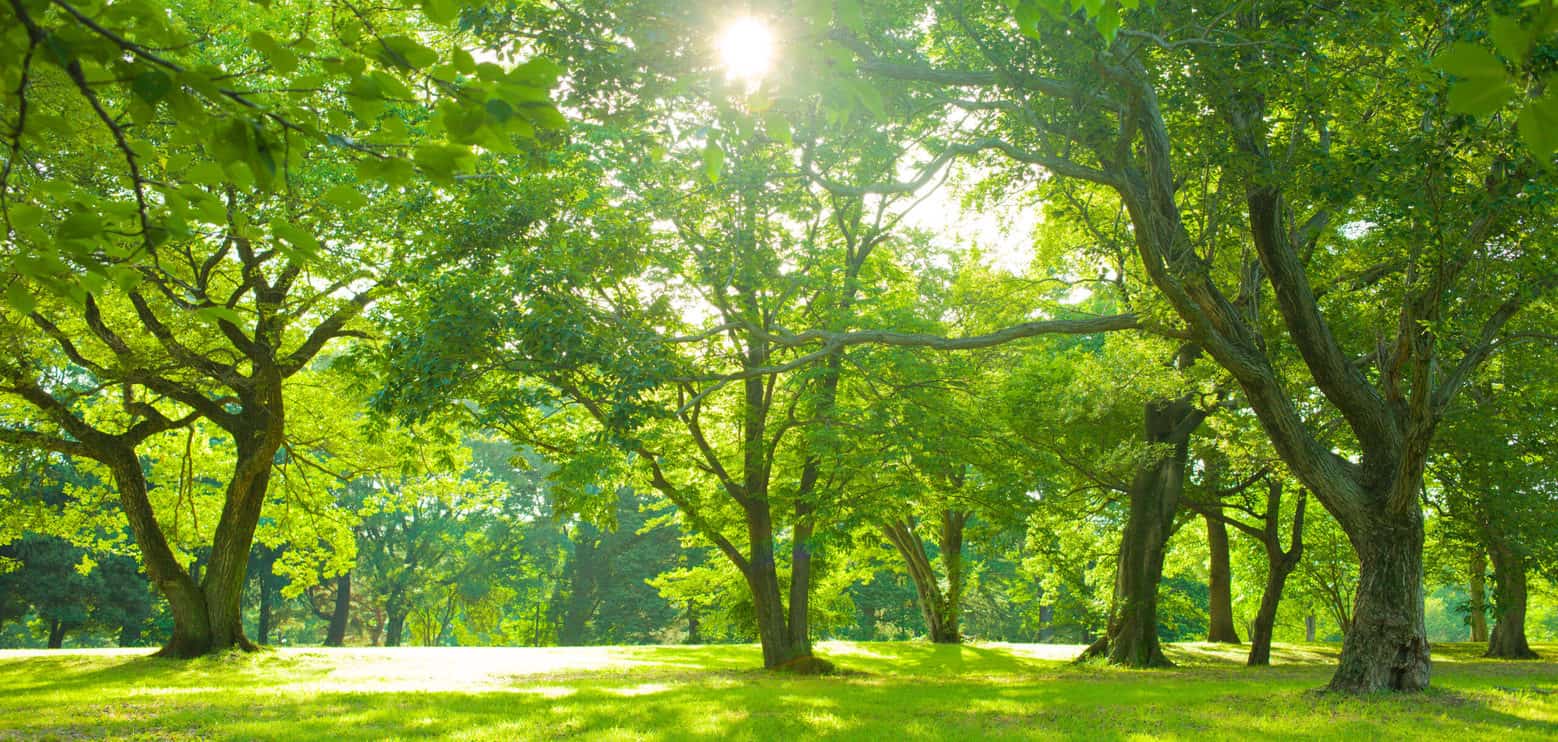Home>Gardening News and Trends>Latest News>Why Are Ash Trees Dying


Latest News
Why Are Ash Trees Dying
Modified: January 22, 2024
Stay updated with the latest news on why ash trees are dying. Learn about the causes and find solutions to protect these valuable trees.
(Many of the links in this article redirect to a specific reviewed product. Your purchase of these products through affiliate links helps to generate commission for Chicagolandgardening.com, at no extra cost. Learn more)
Table of Contents
Introduction
Ash trees, known for their towering height, graceful branches, and vibrant foliage, have long been a beloved feature of landscapes around the world. However, in recent years, these majestic trees have been facing a devastating decline. Ash trees are dying at an alarming rate, causing concern among arborists, environmentalists, and tree enthusiasts everywhere.
The decline of ash trees is not merely a localized issue; it is a global problem. This phenomenon has been observed in various regions, including North America, Europe, and Asia. The implications of this rapid decline extend beyond just the loss of a beautiful tree species. Ash trees play a vital ecological role, providing habitat for numerous species, improving air quality, and enhancing the overall health of ecosystems.
The threat to ash trees stems from a combination of factors, including invasive pests, diseases, and environmental changes. The primary culprits responsible for the decline of ash trees are the emerald ash borer (EAB) and ash dieback disease. These threats have devastated ash tree populations, causing widespread mortality and irreparable damage to ecosystems.
In this article, we will delve into the causes of ash tree decline, exploring the impact of invasive pests, diseases, climate change, and other environmental factors. We will also highlight ongoing efforts to manage and conserve ash trees. By understanding the challenges faced by these magnificent trees and the actions being taken to protect them, we can collectively work towards safeguarding their future.
Background on Ash Trees
Ash trees belong to the genus Fraxinus and are part of the Oleaceae family. These trees are predominantly found in North America, Europe, and Asia. They are known for their unique characteristics, including their tall stature, compound leaves, and distinctive diamond-shaped bark patterns.
Ash trees have a long history of cultural and ecological significance. They have been valued for their timber, which is used in various industries, including furniture making and flooring. The wood of ash trees is known for its strength, durability, and beautiful grain patterns.
In addition to their economic value, ash trees have ecological importance. They provide habitat and food sources for a wide range of wildlife, including birds, insects, and mammals. The seeds of ash trees are a valuable food source for birds, while the bark and foliage serve as shelters for insects and small animals.
Ash trees are also known for their environmental benefits. They help to improve air quality by absorbing pollutants and releasing oxygen. Their extensive root systems aid in preventing soil erosion and retaining water. Additionally, ash trees provide shade, thereby reducing the urban heat island effect and providing a cool and comfortable environment.
There are various species of ash trees, with some of the most common ones including the White Ash (Fraxinus americana), Green Ash (Fraxinus pennsylvanica), and European Ash (Fraxinus excelsior). Each species has its own unique characteristics and adaptations, but all share the common vulnerability to the threats currently facing them.
It is important to recognize the immense cultural and ecological value of ash trees. They have long been an integral part of our landscapes, providing beauty, shade, and habitat. The decline of ash trees is a cause for concern not only for the loss of a beloved tree species but for the negative impact it has on ecosystems and the various species that depend on them for survival.
The Threat to Ash Trees
Ash trees are currently facing a multitude of threats that are rapidly causing their decline and mortality. These threats include invasive pests, diseases, and other environmental factors that have a devastating impact on ash tree populations worldwide.
One of the primary threats to ash trees is the emerald ash borer (EAB), an invasive insect species native to Asia. The EAB larvae feed on the inner bark of ash trees, disrupting the tree’s ability to transport water and nutrients. This infestation gradually weakens and eventually kills the tree. The EAB has spread widely across North America, Europe, and other regions, resulting in the loss of millions of ash trees.
In addition to the emerald ash borer, other insect pests also pose a significant threat to ash trees. The ash leaf beetle and the ash bark beetle are two examples of pests that can cause considerable damage to ash tree foliage and bark. These pests weaken the tree’s defenses and make it more susceptible to diseases and other factors that contribute to its decline.
Ash dieback disease, caused by the fungus Hymenoscyphus fraxineus, is another major threat to ash trees. This disease originates from Europe and has rapidly spread to various regions. Infected trees exhibit symptoms such as leaf loss, crown dieback, and lesions on the bark. Ash dieback can lead to severe decline and ultimately death of the tree.
Climate change and other environmental factors also play a role in the decline of ash trees. Changes in temperature and precipitation patterns can affect the health and resilience of ash tree populations. Extreme weather events, such as droughts and storms, can further weaken the trees and make them more susceptible to pests and diseases.
The combination of these threats has led to a significant decline in ash tree populations worldwide. The loss of ash trees not only impacts the aesthetics of our landscapes but also has profound ecological consequences. The decline of ash trees can disrupt ecosystems, affect wildlife populations that rely on these trees for habitat and food, and decrease the overall diversity and resilience of our natural environments.
Recognizing and addressing the threats facing ash trees is crucial for their conservation and preservation. Efforts to prevent the spread of invasive pests, develop disease-resistant cultivars, and implement sustainable management practices are essential in protecting and restoring ash tree populations.
Causes of Ash Tree Decline
The decline of ash trees can be attributed to a combination of factors, including invasive pests, diseases, and environmental changes. Understanding these causes is essential for devising effective strategies to mitigate the decline and protect ash tree populations.
The primary cause of ash tree decline is the infestation of the emerald ash borer (EAB), an invasive insect species native to Asia. The EAB larvae burrow into the inner bark of ash trees, disrupting the flow of water and nutrients. This effectively starves the tree, leading to its gradual decline and eventual death. EAB infestations have spread rapidly across regions, decimating ash tree populations and posing a major challenge to their survival.
Another significant cause of ash tree decline is ash dieback disease, caused by the fungus Hymenoscyphus fraxineus. This disease affects the foliage, bark, and vascular system of ash trees, leading to leaf loss, crown dieback, and ultimately tree mortality. Ash dieback has rapidly spread throughout Europe and has become a global concern, severely impacting ash tree populations.
In addition to invasive pests and diseases, ash trees also face threats from other insect pests and pathogens. The ash leaf beetle and the ash bark beetle, for example, can cause significant damage to ash trees, weakening their defenses and making them more susceptible to diseases and other stressors.
Climate change and other environmental factors also contribute to ash tree decline. Changes in temperature and precipitation patterns can affect the health and vitality of trees, making them more vulnerable to pests and diseases. Extreme weather events, such as droughts, floods, and storms, further stress ash trees and increase their susceptibility to decline.
The decline of ash trees not only impacts the survival of the trees themselves but has broader ecological consequences. Ash trees provide habitat and food sources for many species, and their decline can disrupt ecosystems and lead to a loss of biodiversity.
Addressing the causes of ash tree decline requires a multi-faceted approach. Proactive measures such as early detection, monitoring, and rapid response to invasive pests and diseases are essential. Developing disease-resistant cultivars and implementing sustainable management practices can also help reduce the impact of these threats. Additionally, addressing climate change and promoting environmental stewardship are crucial for the long-term conservation of ash tree populations.
Emerald Ash Borer Infestation
The emerald ash borer (EAB) is a highly destructive invasive insect that has had a devastating impact on ash tree populations worldwide. Originally from Asia, the EAB first arrived in North America in the 1990s and has since spread to Europe, Asia, and other regions. This small but formidable pest has caused significant mortality among ash trees and poses a serious threat to their survival.
The life cycle of the EAB begins with adult beetles emerging in the spring and early summer. These metallic green beetles feed on ash tree foliage but cause minimal damage. However, it is the larvae of the EAB that inflict the most harm. The female beetles lay eggs on the bark of ash trees, and once the eggs hatch, the larvae bore into the inner bark, forming S-shaped galleries as they feed and grow. This feeding disrupts the tree’s vascular system, preventing the transport of water and nutrients, ultimately leading to tree decline and death.
EAB infestations often go unnoticed in the early stages, as the initial symptoms may be subtle. As the infestation progresses, however, signs become more apparent. These include canopy dieback, branch mortality, bark splitting, and the emergence of D-shaped exit holes left by adult beetles. By the time these symptoms become evident, the infestation is usually widespread, and the tree’s chances of survival are slim.
The spread of the EAB is primarily facilitated by human activities. Infested wood products, such as firewood or timber, can harbor EAB larvae, allowing the pest to be transported to new areas. Additionally, adult beetles are capable of flying short distances, contributing to the rapid spread of the infestation.
Efforts to combat the EAB infestation have focused on early detection, monitoring, and management strategies. The use of pheromone traps, visual surveys, and aerial surveys have been employed to track the movement and extent of the infestation. Once an infestation is confirmed, management techniques such as insecticide treatments, tree removal, and replacement strategies are implemented to help mitigate the impact on ash tree populations.
Long-term strategies for managing the EAB infestation include the development and deployment of biological control agents. These natural predators, such as parasitic wasps, target and attack EAB larvae, helping to reduce their population. Research into the genetic resistance of ash trees is also underway to identify ash tree varieties that can withstand or tolerate EAB infestations.
The management of the EAB infestation requires a coordinated and concerted effort from various stakeholders, including government agencies, tree care professionals, and communities. Public awareness and engagement in prevention and management measures are crucial for limiting the spread of the EAB and protecting ash tree populations.
Other Insect Pests
In addition to the emerald ash borer (EAB), ash trees face threats from other insect pests that can cause significant damage and contribute to their decline. These pests target different parts of the tree, weakening its defenses and making it more susceptible to diseases and other stressors.
Among the notable insect pests affecting ash trees is the ash leaf beetle (Potthastia enchates). This pest feeds on the foliage of ash trees, causing defoliation and reducing the tree’s ability to produce energy through photosynthesis. The larvae of the ash leaf beetle can cause severe damage, often defoliating entire branches or even entire trees. However, while the ash leaf beetle can cause aesthetic damage, it usually does not result in the death of the tree.
Another common ash tree pest is the ash bark beetle (Hylesinus spp.). These small beetles colonize the bark of ash trees, creating tunnels and galleries where they lay their eggs. The larvae feed on the inner bark, disrupting the tree’s vascular system and compromising its ability to transport water and nutrients. This infestation weakens the tree and makes it more susceptible to diseases, further contributing to its decline.
Infestation by these insect pests can have various detrimental effects on ash trees. Defoliation by the ash leaf beetle reduces the tree’s ability to produce carbohydrates, weakening its overall health. The feeding activities of the larvae of the ash bark beetle disrupt the flow of water and nutrients, leading to significant decline and mortality of the tree.
Management strategies for combating insect pests on ash trees often involve a combination of cultural and chemical controls. These include pruning to remove infested branches, promoting tree health through proper nutrition and watering, and the targeted use of insecticides to control populations. However, it is important to consider the potential impact of these interventions on beneficial insects and other non-target organisms.
Efforts are being made to develop and deploy biological control agents to combat insect pests on ash trees. These natural predators, such as parasitic wasps, target and attack the larvae of these pests, helping to reduce their populations and mitigate the damage they cause. Research is also focused on the development of resistant ash tree cultivars that can withstand or tolerate infestations by these pests.
While the impact of other insect pests on ash trees is not as widespread or destructive as the emerald ash borer, they still pose a threat to the health and survival of these trees. Vigilance in monitoring and early detection of infestations, along with appropriate management measures, can help mitigate the impact of these pests and preserve ash tree populations.
Ash Dieback Disease
Ash dieback, also known as Chalara dieback of ash, is a devastating disease caused by the fungus Hymenoscyphus fraxineus. This fungal pathogen originates from Asia and has rapidly spread throughout Europe and other parts of the world, posing a significant threat to ash tree populations.
Ash dieback affects all species of ash trees, with varying degrees of susceptibility. The disease primarily targets the foliage, bark, and vascular system of the tree. Infected trees exhibit symptoms such as leaf loss, crown dieback, and lesions on the bark. These lesions can expand and girdle the stem, leading to the death of branches or the entire tree.
The fungus spreads through spores which are produced in fruiting bodies that appear on infected trees. These spores can be dispersed by wind, rain, animals, and human activities, further facilitating the spread of the disease. The fungus is also able to survive in leaf litter and wood debris, acting as a source of infection for healthy trees.
The impact of ash dieback on ash tree populations can be severe. Trees that are infected with the disease often experience reduced growth and weakened structural integrity, making them more susceptible to secondary pathogens and stressors. Large-scale mortality of ash trees has been observed in areas heavily affected by the disease.
Efforts to manage and control ash dieback have focused on several strategies. These include the removal and destruction of infected trees, strict movement controls on ash tree materials, and public awareness campaigns to prevent the spread of the disease. In addition, research and breeding programs are being conducted to identify and develop ash tree varieties that exhibit resistance or tolerance to ash dieback.
Effective management of ash dieback requires a combination of approaches. Early detection and rapid response are critical to preventing the spread of the disease. Regular monitoring of ash tree populations, coupled with proper sanitation practices and the use of fungicides, can help control the disease and limit its impact.
It is important to recognize the ecological and cultural value of ash trees and the devastating consequences of ash dieback. The loss of ash trees not only affects the aesthetics of our landscapes but also disrupts ecosystems and threatens biodiversity. Sustained efforts to prevent the further spread of ash dieback and support the development of resistant ash tree varieties are essential to protect and preserve these important tree species.
Climate Change and Environmental Factors
Climate change and other environmental factors are contributing to the decline of ash trees and increasing their vulnerability to pests and diseases. These changes have significant implications for the health and survival of ash tree populations worldwide.
One of the key impacts of climate change on ash trees is the alteration of temperature and precipitation patterns. Rising temperatures can create conditions that are more favorable for the spread and survival of pests and diseases. Warmer winters, in particular, can disrupt the natural biological controls and reduce the mortality of pests, allowing them to thrive and cause more damage to ash trees.
Changes in precipitation patterns also affect ash trees. Droughts, for instance, can lead to water stress and weaken the overall health of the tree, making it more susceptible to pests and diseases. Conversely, excessive rainfall can create favorable conditions for the development and spread of fungal diseases, such as ash dieback.
Extreme weather events, such as storms and floods, pose additional challenges for ash trees. Severe storms can result in physical damage to trees, such as broken branches or uprooting, which can compromise their health and increase their susceptibility to pests and diseases. Flooding can cause root damage, reducing the tree’s ability to uptake water and nutrients.
Furthermore, environmental factors such as air pollution and soil conditions also impact the health of ash trees. Air pollutants, including ozone and particulate matter, can weaken trees and make them more susceptible to pests and diseases. Poor soil conditions, such as compacted or contaminated soil, can limit root growth and hinder the tree’s ability to access necessary nutrients.
Adapting to these environmental changes and mitigating their impact on ash trees requires a multifaceted approach. Enhancing tree resilience through proper care and management is crucial. This includes ensuring adequate watering, promoting healthy soil conditions, and providing appropriate fertilization. Implementing tree selection strategies that prioritize climate-adapted species and diversifying tree populations are also important in future-proofing urban forests.
Additionally, addressing the root causes of climate change through reductions in greenhouse gas emissions and promoting sustainable practices is essential for the long-term survival of ash trees and the overall health of ecosystems. Collaborative efforts among policymakers, researchers, arborists, and the public are necessary to mitigate the effects of climate change and preserve ash tree populations for future generations.
Management and Conservation Efforts
To combat the decline of ash trees and protect their populations, various management and conservation efforts are being implemented around the world. These efforts aim to address the threats posed by invasive pests, diseases, and environmental factors, as well as promote the long-term sustainability of ash tree ecosystems.
One of the key management strategies is the early detection and rapid response to invasive pests, such as the emerald ash borer (EAB). Monitoring programs, including the use of pheromone traps and visual surveys, help identify infestations and guide targeted management efforts. These efforts may involve the removal and destruction of infested trees, treatment with insecticides, and the implementation of measures to prevent the spread of pests.
Conservation efforts also include the development and deployment of biological control agents to combat invasive pests. Natural predators, such as parasitic wasps, are introduced to target and reduce pest populations. This approach helps to limit the impact of these pests on ash trees, promoting a more balanced ecosystem and reducing the reliance on chemical interventions.
In the face of ash dieback and other diseases, research and breeding programs are focused on developing ash tree varieties that exhibit resistance or tolerance to these diseases. By identifying and propagating resistant genotypes, these efforts aim to restore and preserve healthy ash tree populations. At the same time, the removal and destruction of infected trees help prevent the spread of diseases and reduce the overall disease pressure on surrounding trees.
From a broader perspective, promoting community engagement and public awareness is crucial for the success of ash tree management and conservation. Educating the public about the threats facing ash trees and the importance of their preservation fosters a sense of responsibility and encourages individuals to take part in prevention and management efforts. Additionally, collaborations between government agencies, arborists, environmental organizations, and the public allow for a coordinated approach in protecting and managing ash tree populations.
Reforestation and diversification of urban forests can contribute to the long-term conservation of ash trees. By planting a variety of tree species and ensuring ecosystem resilience, the impact of specific threats can be minimized, and the overall health and diversity of urban forests can be enhanced.
Efforts to address climate change and mitigate its impact on ash trees are also imperative. Promoting sustainable practices, reducing greenhouse gas emissions, and implementing adaptation strategies are all vital components of effective management and conservation efforts. Collaboration between scientists, policymakers, and communities is essential to develop and implement comprehensive strategies that protect and preserve ash tree populations for future generations.
Conclusion
The decline of ash trees represents a critical ecological and environmental challenge that requires urgent attention and concerted efforts. The threats posed by invasive pests such as the emerald ash borer, diseases like ash dieback, and the impacts of climate change and other environmental factors have profoundly affected ash tree populations worldwide. The loss of these majestic trees not only diminishes the aesthetic beauty of our landscapes but also disrupts ecosystems, threatens biodiversity, and compromises the numerous benefits provided by ash trees.
Effective management and conservation efforts are vital in protecting and preserving ash tree populations. Early detection, monitoring, and rapid response to invasive pests and diseases are crucial for preventing their spread and minimizing their impact on ash trees. The use of biological control agents and development of disease-resistant ash tree varieties offer promising solutions to combat the threats faced by these trees.
Addressing climate change and promoting sustainable practices are essential components of ash tree management and conservation. By mitigating the effects of climate change, reducing greenhouse gas emissions, and promoting ecologically diverse urban forests, we can enhance the resilience of ash trees and mitigate the impact of environmental stressors.
Furthermore, community engagement and public awareness play a vital role in ash tree preservation. Educating the public about the importance of ash trees, the threats they face, and the actions individuals can take to help protect and preserve these trees are crucial in fostering a sense of responsibility and collective action.
Preserving ash tree populations requires collaborative efforts among scientists, policymakers, arborists, environmental organizations, and the public. By working together, we can implement effective strategies to manage pests and diseases, promote selective breeding for disease resistance, and establish sustainable practices to ensure the long-term survival of ash trees.
Ultimately, the preservation of ash trees is not just about safeguarding a species but also about protecting the intricate web of life and ecological balance they contribute to. By valuing and protecting these magnificent trees, we can secure biodiversity, maintain healthy ecosystems, and leave a lasting legacy for future generations to enjoy.







